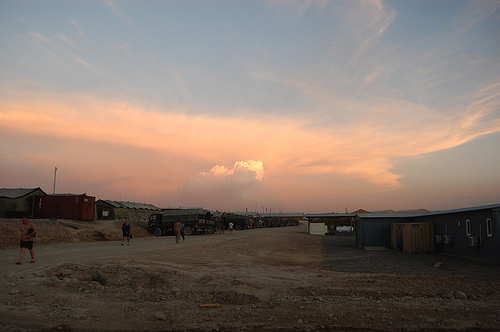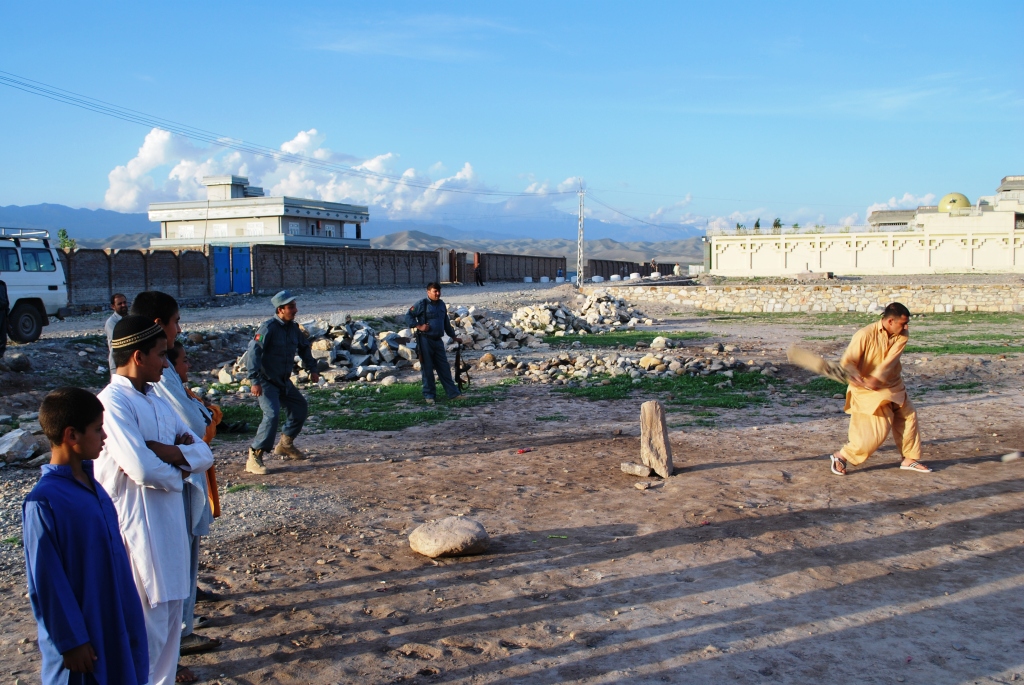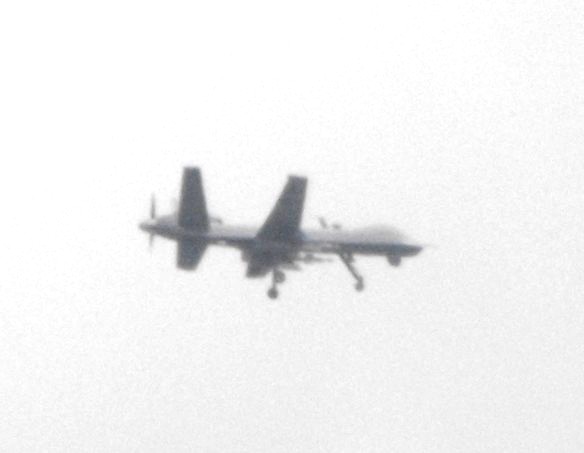There has been a flood of RFPs (request for proposal’s) hitting the street of Kabul concerning FOB Sharana. Sharana (spelled Sharan on UN AIMS maps) is the capitol of Paktika Province and a relatively small city of some 2,200 people.

Here is an assessment done in the not too distant past on Sharana: The dominate tribe in the region is the Suleimankhel who are Ghilzai Pashtuns and inhabit all of the eastern districts of the province, from Wor Momay up to Sharan district. According to former provincial Governor Ghulab Mangal, the Suleimankhel provide the majority of recruits for the Taliban in the province. As a result, the level of anti-coalition militia activities remains high in areas dominated by Suleimankhel. In most areas of Afghanistan the Taliban is a collection of indigenous narco-jihadi-tribal guerrilla forces. Around Sharana this is not the case the Armed Opposition Groups (AOG) fighters are dedicated Taliban who are not motivated by financial gain, access to reconstruction projects, or narco money. Aid projects in the Province have stagnated in the face of unrelenting AOG attacks on all non indigenous peoples, projects, and the Afghan security forces. The Paktika PRT has 35 projects authorized and funded to the tune of 6.5 million but has only spent $691,350 to date. There are no high quality paved roads in the Province. The primary roads which do exist are mostly paved and service the Ghazni Sharana Monari corridor with two connecting Sharana to Ghazni and one connecting Sharna to Khost.
FOB Sharana has historically been a bad place to be. This embedded video of the FOB under attack was typical for the area for most of the recent past:
But the situation there has changed and changed radically. An associate of mine recently traveled to Sharana by road something you simply could not have done just a few short months ago. There is little question that the recent deployment of US Army units in the provinces around Kabul have made road travel in the Southeast much safer. When he arrived at FOB Sharana he interviewed several officers in detail about the local situation. It is unbelievably calm. There are now two maintenance battalions in Sharana and they are building that FOB up to be a second and third echelon maintenance facility. Last year, in preparation for significant expansion, the FOB sponsored a series of local workshops on the construction trades and then hired the graduates. The guys he talked with said they have not been attacked in over a year I didn’t’ believe that and spent hours poring over old reports and sure enough I found nothing on FOB Sharana going back to January 2008. That is one impressive accomplishment – if only we could now get some manuer units off that FOB and embeded into the local community we could very well start seeing light at the end of the Afghanistan tunnel.
Ever the pessimist I pointed out to my colleague that it is crazy to have your maintenance depot located in such a volatile area how are you going to evacuate broken armored vehicles over those roads from the south? Going through Zabul Province is still a drama and it pretty much always had been. Of course what the hell would we know about the planning that went into this but I tell you what. The more I think about it the more I like it. The reason why ISAF units are going to be able to evacuate critical vehicles and equipment to Sharana is that they have no choice. They have keep what is their most important MSR (main supply line in milspeak) wide open or else. This is actually a genius move because it forces every unit in the field to focus their attention and resources on opening and maintaining an MSR system which has been problematic since 2004. If it works if the military is able to routinely evacuate damaged equipment to Sharana from the south, southeast and east that would be one hell of an improvement for everyone on our side of the battle (the other side too for that matter but who cares about them?) Open roads mean the free flow of commerce and the tribe who can bring commerce to this strange land will be the strongest tribe. Damn if it does not look like that tribe may well be the Southeastern Afghanistan branch of the American Army.
But with the good comes the bad. On 8 April a Special Forces team conducted a raid at night in the village of Ali Daya which is 5 kilometers south of Khost City. As they prepared for an assault on their target they took fire from a neighboring compound. They did what they were trained to do attacking the source of fire and eliminating that threat. Unfortunately they had to quickly admit that the secondary target turned out to be a local family the wife, who was killed, was a well known teacher who worked at at the local girl’s school run by the British NGO Care. The compound belonged to a senior Afghan Army officer who was out in the field fighting the Taliban. There were two woman wounded, two more killed along with two men and a child. Here is something that I find amazing. I was in Kabul having just finished a marathon trip to Singapore when I started listening to a CNN report and I thought I was hearing things. It was one of the most informed exchanges about the situation in Afghanistan I have ever heard. Here is the not quite verbatim exchange as I remember it:
CNN Kabul reporter The Afghan people are getting very tired of the number of innocent civilians who continued to be killed. But far more are being killed by the Taliban than by ISAF.
CNN Anchor In the past rival tribal leaders would pass on intelligence to the military which was solid enough to be actionable but when we acted it would turn out that they had used us to target their enemies who had nothing to do with the Taliban. Is that still a problem?
CNN Kabul reporter Yes, and the bottom line is that people will support the side they feel will bring them security and protection.Right now there are some in Afghanistan who feel that we are not the ones who will bring them security.
Maybe it is me I do not pay much attention to CNN but that seemed to be an unusually balanced and I think accurate bit of reporting. I never heard anything like that during the prior administration. There is some change for you I guess- straight reporting by CNN of all organizations.
But here is the thing I find it hard to believe that we are unable to verify which families in a targeted village are clearly on our side and which are not. The woman who was killed was not only a prominent citizen but a very brave soul. Khost is a volatile place with a strong local Taliban presence. Female teachers take on a considerable amount of personal risk in areas where the Taliban are active and it is people like her we should bend over backwards to protect. The units who do these kinds of missions are not comprised of amateurs these guys are hard corps professionals who do not like to make mistakes. Somebody on high green-lighted that mission based on what had to be verified (as in not single source) intelligence. They may or may not have been going after a legitimate target but that is now irrelevant. My problem with this whole situation is that we should be able to verify who the hell is living in a targeted village just outside a main provincial city before we send the apex predators to sort them out. If the FOB in Khost City was doing the same thing the FOB in Sharana was doing they would have (in theory at least) the situational awareness built through relationships – to be able to do target confirmation using trusted locals.

ISAF was very quick this time to admit they had made a terrible mistake and take responsibility for it. That is smart and probably why the incident has disappeared from the local press. But we have got to stop doing this. I understand the constraints of operational security as a good general rule one wants to avoid alerting an enemy you are coming after him least he prepare an unpleasent surprise. But when our varsity SF comes after a high value target it really doesn’t matter too much if the average Taliban leader has been tipped off or not. If he is in the target area he is going to go down and there very little he can do to alter the outcome. There are UAV platforms overhead long before the assault teams move in. If the targeted compound is reinforced with fighters so what? There is a plan for that (think precision air delivered ordinance.) It is not likely the target will try to flee in a vehicle. Everyone is this country knows what a Predator is and a wanted man trying to escape a target by vehicle knows as soon as he is clear of the town Mr. Predator will get him, or maybe an A-10 who is loitering about with some stores to burn, or an AC 130, the end result is the same. As more troops come into the country and duplicate the reported success for FOB Sharana we should be able to leverage those relationships with the local population to help us prevent more incidents of this nature. We own the night and the skies in Afghanistan and should be taking the time and risks to confirm the occupants of targeted compounds, isolate them from the civilian population and then go in and take them down. When the hard boys hit these compounds if the occupants show any resistance, or their neighbors arm themselves and come running over to help their fates are sealed. Every compound in Southeastern Afghanistan will respond to armed intruders coming through the front gate, or climbing on their compound wall with a hail of AK 47 fire. We know this to be the case – it is time to incorporate that fact into the mission planning profile and make the appropriate adjustments.




The Thunder Run has linked to this post in the blog post From the Front: 04/14/2009 News and Personal dispatches from the front and the home front.
I can’t believe how that place has grown since I was last there in ’06. It was nothing then, just mud, a gate, and some wire.
FOB Sharana came under attack twice in December and once in August. Shantytown, right outside the ECP, nearby is a dangerous place. Taliban are active in the area. There have been KIA’s in the fall of both LN’s and U.S. Soldiers in the nearby area. I personally saw a LN KIA come into the aid station.
They have had a large build up and had a dedicated construction team. (It was led by a dweed when I was there – a milk toast AF Lt Col named Denis but some of the other guys were good. 62nd Engineers did a good job and the 506th also did a good job.
So, it’s not as safe as the author made it sound.
Hi Tim,
I got a chance to meet you and a couple of your pals at the Taj. I bumbed a ride from Fenty with you and your buddy.
-Just wanted to say hello; saw the picture of Scout-still bumbing around I see. I’m still in Kabul.
I look forward to getting back to J’bad in a couple of weeks. I’ll look you up.
Cheers,
Gilbo.
1SPOD-D
Hi Everyone. I found this site and read it with great concern. My boyfriend will soon be arriving in FOB Sharana. I’m very worried about this. I wish everyone there and everywhere serving our country God’s Speed.
I don’t know what to say. I wish someone could write to me and let me know what to feel and how to feel during this very difficult time.
Sincerely,
Nancy Connors
“But here is the thing I find it hard to believe that we are unable to verify which families in a targeted village are clearly on our side and which are not. The woman who was killed was not only a prominent citizen but a very brave soul.”
Probably because we are not out doing a census – which we should have done in late 2002/3.
First thing you do is set up a program so that everyone in a family will get a (small but worthwhile) twice yearly allotment of food and a small cash sum for each person – but only if the have the “official Afghan ID card” and can show it during the hand out time.
How do they get an ID card?
They get one during the first official Afghan Census where coalition forces will gladly take your photo, retina scan and fingerprints. For the ladies just the retina and finger prints, or simply finger prints since we are more worried about the males.
But what are they going to do all that with?
BATS-HIIDE.
The Army CALL and the MI Professional Bulletin (MIPB) have good articles on this.
Population control (and I don’t mean in a 1984 sense) is crucial in COIN. Algeria and dozens of other conflicts have taught that.
Lots of smarter people have written about that stuff.
Interesting is there are still COIN manuals from Vietnam floating around that discuss population control. CGSC’s library website has digital copies for download.
Call it Human Terrain, Cultural Intel or Societal Intel or whatever…
A Commander wouldn’t think of sending guys into an area w/o collecting, analyzing and disseminating IMINT (imagery) so why do we send them into an area w/o properly collecting, analyzing and disseminating Cultural Intel or Societal Intel?
Makes ya wonder.
I’m going to do some digging on this when I go downrange for my Transition Team mission later this year.
~